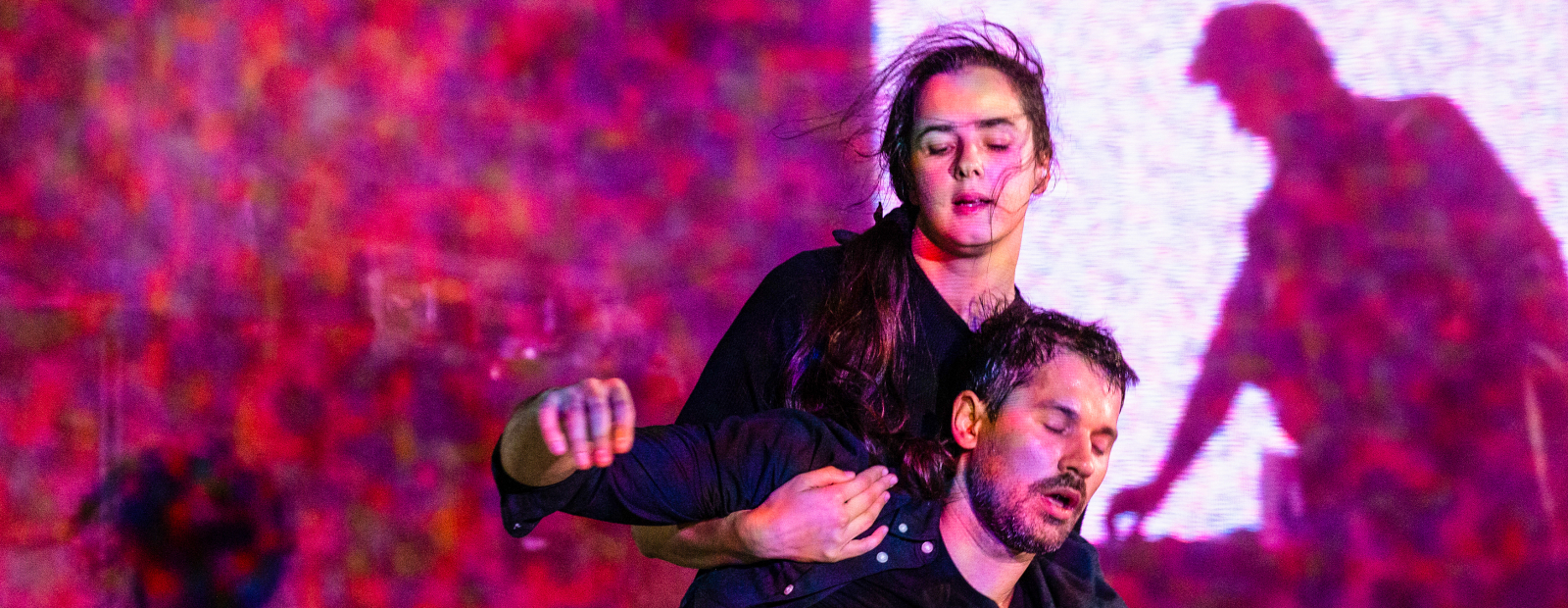Die or live – such a name, without asterisks and politically correct digits, is in itself an attention-grabbing, purposely chosen effect and a deliberate provocation. We can sympathize with those electronic media who have to understand how to live handle a non-normative lexicon word to be broadcast between the hours of 7 to 22 are not permitted by article 24 of the law on electronic media.
However, the basis of the concept of the show is very far from hooliganism – it is a tribute to the theme of prostate cancer. It is not for nothing that both exhibitions took place at the RISEBA Architecture and Media Center H2O 6 November 25 and 26 aligned with Men’s Health Month, but before the show, men had the opportunity to take a PSA or Prostate Specific Antigen level test for free (it’s better for men middle-aged know this number by heart when they go to a urologist – I can say from experience that the strictest doctors do not forgive ignorance in this area). There was also a small queue, and already during the performance an SMS sent from Gulbja’s laboratory appeared on the phone with a combination of letters and numbers, which later turned out to be the password for accessing the results of their analyses.
But before getting to the form and content, I had to make a small digression on the non-normative vocabulary in the cultural space.
Can you write on a CV?
The authors of the play – in particular Raimonds Ħirķis and the production director Reinis Boters are responsible for the dramaturgy – not only do not put an asterisk in the well-known name, but also do not try to replace it with a more neutral synonym or euphemism, for example, screw or pinch. Likewise, the show’s most important dialogue, shown in screenings, takes place between a man and a pimp, not a cock, dick, or dick. And the tear mentioned in the title does not flow down someone’s P., but – yes, yes, on Pimpja’s cheek. Will the actor Uldis Sniķers write the lead role in this comedy in his CV and, if so, how will he write this name? Indeed, the move with the name of the show is right, because it immediately distinguishes those viewers for whom obscene expressions are unacceptable in any context, including in an artistic context.
The discussion of whether and to what extent non-normative vocabulary is permitted in a work of art, whatever it is, is quite old. Of course, nothing like this was unthinkable in the Soviet era, but later it was sometimes felt that the opportunity to be rude was equated with the opportunity to demonstrate spiritual freedom, which, admittedly, is rather naive, just like the belief that you have to speak slang in shows aimed at young people. On the other hand, it is silly to be horrified by vulgarity in any situation, even where it is absolutely organic and necessary. Especially in large theaters, audience reaction to the use of rude words is usually nervous and even inappropriate laughter. Memory recalls some events, for example how offended the audience of the National Theater was when in 2002 in the show by Jānis Jurkānas He’s a fool Uldis Dumpis cursed badly, but actually, giving such a sharply negative role to an actor loved by the audience was a very smart move by director Māras Ķimele.
I also remember my embarrassment when I recommended to my loved ones to attend a Liepāja theater performance Inishman’s lame and the first feedback was: oh my, how well they spoke! At that moment I realized that the threshold of perception of non-normative vocabulary is individual and depends on the attitude towards the other components of the show. On the other hand, the fact that Hans Bertilsson’s performances are anchored in very old memories The story of a street girl (JRT, 1993) was originally called I’m just whiningparody of the series Only Mary first name. But maybe my memory creates ghosts. Obscene words are also difficult to translate, to the point of being so grotesque that when translating Tom Phillips’ book into Latvian Humans. A short story of how we fucked it all up, the word “s*bojajam” appeared on the cover of the book – with an asterisk in the name, in which there is nothing rude.
Effects on the senses
Kind young women encourage you to bring ear plugs before the show. To my coquetry, which perhaps can be done, they reply that this time they can really, without joking, be useful. During the performance, I experimented with inserting, removing and reinserting the caps. Groups Tense the sonic density created affects the body not like music in the usual sense, but with an almost seismic effect that shakes standing spectators (there are no seats here). I’ve noticed that when a part of the sound is filtered with plugs, I pay more attention to what’s happening on stage. When the plugs are removed, the sound is dominant.
There is a description of the idea in the show program, and it’s good to know about it, because the process of about an hour and twenty minutes itself is not a linear story with a very clearly perceptible plot. It’s not a rock opera, because the Man and the Woman don’t sing, but interact in motion. In the initial part of the performance, Agate Bankava and Valérys Olehno move for a long time accompanied by a relatively muffled background music, and this can denote the interaction between two people as much as the “relationship” between a sperm and an egg – yes, such a version would be legitimate if the performance concerned the conception of a child. By this, I’m trying to say that the existence of the dancers on stage doesn’t materialize in domestic terms. Over time it becomes clear that in this couple the man is the weaker sex due to his health condition and the woman is his support. On the other hand, the dialogue between a man and his genital organ can be perceived ironically, but in this case it is an internal dialogue, a decision between two options and a question of what to sacrifice.
Video projections of Katrina Neuburg play an extremely important role in the show. It is true that she, being also the stage designer of the show, plans to some extent that it is difficult to read all the texts from all places, because the half-drawn curtain, which separates the room well, still prevents the standing audience on the left reading part of Pimpja’s text. There are also columns in the hall, but of course you can move to a more comfortable viewing position, but there are many spectators and you don’t want to disturb others. The video projections reflect the angular and even fragmented perception of the character’s world, including jerky shots of the medical facilities and the environment surrounding the protagonist. In combination with Julia Bondarenko’s light score, the visual image, along with the auditory one, is one of the whales on which the play rests.
The performance Die or live it’s definitely an adventure. Yes, it can be argued whether its creators should allow stagings where the characters sit or lie down on the floor, because a large part of the audience of the standing show does not see them. But these are technical details. The very fact that not a didactic plot is devoted to a socially relevant topic, which in this case would be in bad taste, but a separate, self-sufficient and without any billboarding, in terms of form, work of art seems essential.


